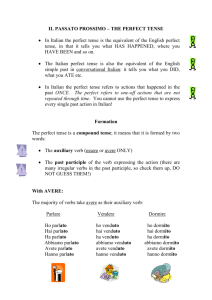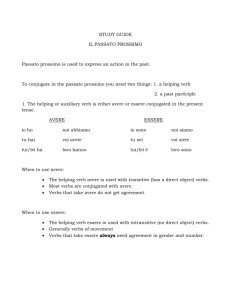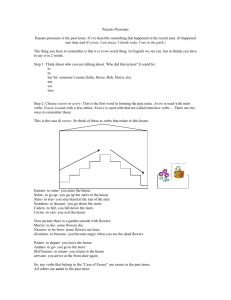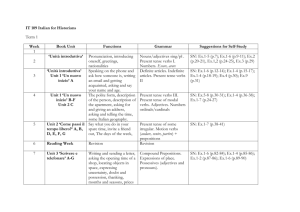passato prossimo
advertisement
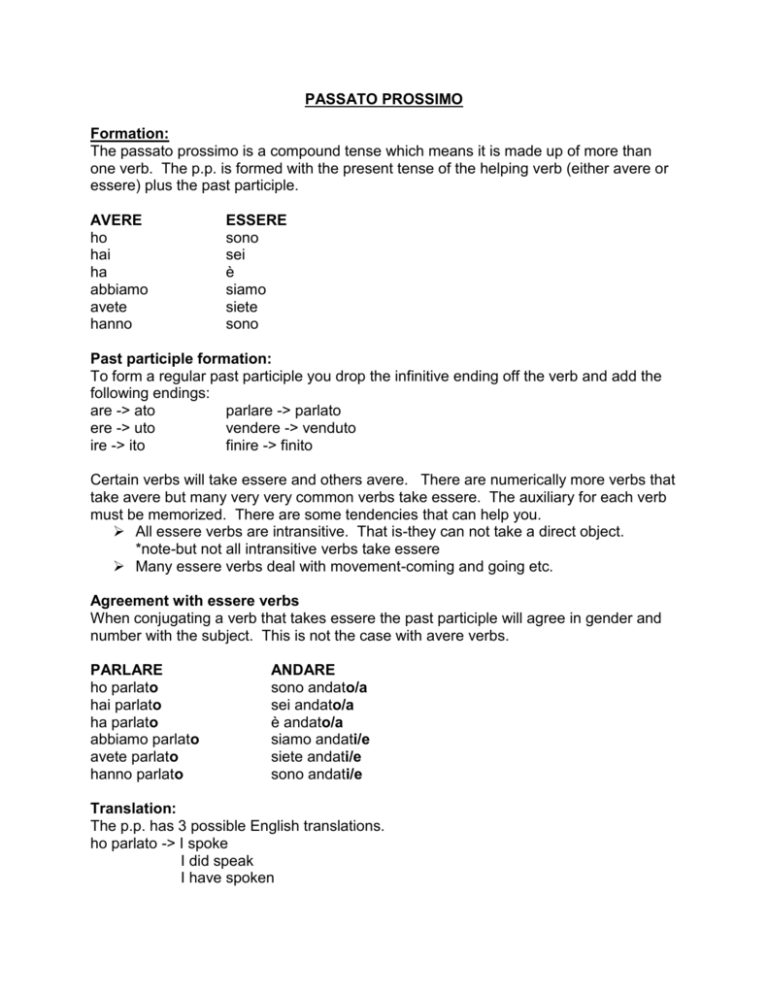
PASSATO PROSSIMO Formation: The passato prossimo is a compound tense which means it is made up of more than one verb. The p.p. is formed with the present tense of the helping verb (either avere or essere) plus the past participle. AVERE ho hai ha abbiamo avete hanno ESSERE sono sei è siamo siete sono Past participle formation: To form a regular past participle you drop the infinitive ending off the verb and add the following endings: are -> ato parlare -> parlato ere -> uto vendere -> venduto ire -> ito finire -> finito Certain verbs will take essere and others avere. There are numerically more verbs that take avere but many very very common verbs take essere. The auxiliary for each verb must be memorized. There are some tendencies that can help you. All essere verbs are intransitive. That is-they can not take a direct object. *note-but not all intransitive verbs take essere Many essere verbs deal with movement-coming and going etc. Agreement with essere verbs When conjugating a verb that takes essere the past participle will agree in gender and number with the subject. This is not the case with avere verbs. PARLARE ho parlato hai parlato ha parlato abbiamo parlato avete parlato hanno parlato ANDARE sono andato/a sei andato/a è andato/a siamo andati/e siete andati/e sono andati/e Translation: The p.p. has 3 possible English translations. ho parlato -> I spoke I did speak I have spoken
